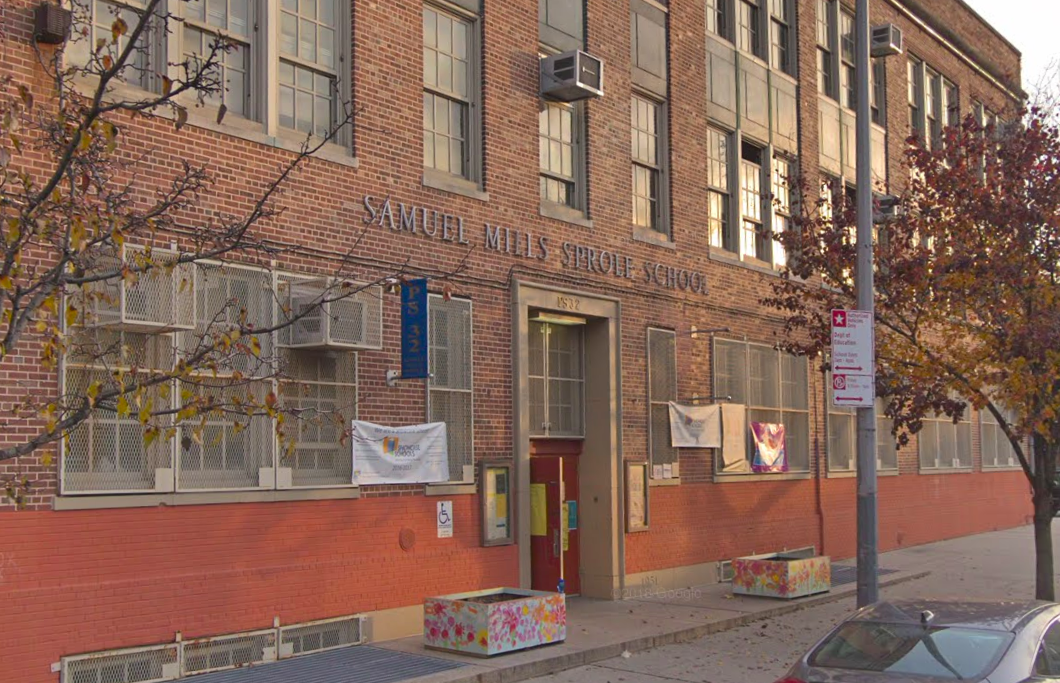Sweeping Attendance Zone Changes Proposed For Elementary Schools In Brooklyn’s District 15


By Christina Veiga, Chalkbeat
In a bid to relieve overcrowding and help spur integration, the education department is weighing whether to redraw elementary school zone lines — or remove attendance boundaries altogether — in a swath of Brooklyn’s District 15.
Those were the two big-picture possibilities presented Thursday night by officials who are reconsidering the attendance boundaries around seven schools in the neighborhoods of Red Hook, Carroll Gardens, Boerum Hill, and Cobble Hill.
“This is about thinking about the needs for all of our children, and the need to provide equity and access and integration to a district that, in some cases, is pretty segregated,” District 15 Superintendent Anita Skop told parents. “We want that to change.”
The sweeping rezoning proposal comes on the heels of dramatic changes in the middle school admissions process for District 15 that advocates hope will lead to more integrated schools.
For the elementary schools, one of the floated proposals would redraw smaller attendance zones around overcrowded P.S. 29 and P.S. 58, while increasing the zones around schools that have unused space.
The second would move the district to a lottery admissions system, with families applying to the schools of their choice.
Both scenarios would include a priority for 25 to 35% of seats for students who are learning English as a new language, live in temporary housing, or qualify for free or reduced-price lunch. The aim is for every school to enroll a percentage of those students, who often need more support to thrive, that matches the average across the seven affected schools.
Those schools are: P.S. 15, P.S. 29, P.S. 32, P.S. 38 The Pacific School, P.S. 58 The Carroll School, P.S. 261, and P.S. 676 The Red Hook Neighborhood School. Brooklyn New School is not included in the proposals because it already admits students from across the borough through a process designed to increase integration.
Either approach is likely to face stiff pushback, especially since some of the affected schools are among the district’s most coveted — and least diverse, racially, ethnically, and economically. For example, at P.S. 58, more than 73% of students are white and less than 12% come from low-income families. But at P.S. 676, virtually all students are black or Hispanic and come from low-income families.
At a Thursday meeting at P.S. 32 to present the proposals, parents raised concerns, sometimes passionately, about the changes potentially forcing families to travel long distances to get to school with their little ones. But some also offered potential solutions, such as busing and extended before- and after-school programming.
“People are supportive of the goal of equity but proximity is extremely important,” said Camille Casaretti, president of the local Community Education Council, summarizing the thoughts that parents shared during one of the small group sessions at Thursday’s meeting.
Others worried that gentrification would get in the way of the city’s integration goals. Still another challenge lies in attracting students to schools that have been perceived as struggling or that families have shunned.
Of particular concern was P.S. 676, which has faced persistent rumors that it could get shut down, along with enrollment competition from a nearby charter school.
Skop insisted the school will remain open and said the district is weighing new programs that could help attract more families, though she declined to detail her plans. Advocates from the neighborhood said P.S. 676 parents hadn’t been properly engaged in the rezoning process, and more needed to be done to get their input and hear their concerns.
“Do a better job of articulating a plan,” said Javier Lopez, an advocate with the Red Hook Initiative, which works with youth and families in the neighborhood. “Give that specific school the information they need to understand what’s going to happen to their kids.”
One proposal: redrawing zone lines
Under the first possibility presented, the attendance zones around overcrowded schools would be reduced. P.S. 29 would admit 90 to100 kindergarten students, down from 153 currently. P.S. 58 would enroll 100 to 110 students, down from 193.
Other schools would see an increase in their zone size. Those schools are P.S. 15, P.S. 38, and P.S. 32, which is opening an addition with room for more than 400 new students.
P.S. 676 and P.S. 261 would preserve their current zone size.
All of the schools would give an admissions priority to vulnerable students for 25 to 35% of seats.
The education department did not provide specifics for how zone lines might be redrawn, saying they want to hear feedback on both broad approaches before drilling down further into either.
Another possibility: removing zone lines altogether
Under the second proposal, individual zone lines for the seven schools would be eliminated. Instead, parents would apply to the schools of their choice, similar to what happens at the middle school level in the district.
If a school receives more applications than it has available seats, then admissions would be determined by lottery.
As in the first scenario, 25 to 35% of seats would be prioritized for students who are learning English as a new language, live in temporary housing, or qualify for free or reduced-price lunch.
The timeline for potential change
Any changes are expected to go into effect for the 2020-2021 school year. They would apply to pre-K, kindergarten and students who are new to the district. But if students have an older sibling at a school that changes its attendance zone, they are expected to be grandfathered into that school.
It’s up to the education department to present a formal plan for changes, which is expected some time this fall. Then the local Community Education Council has 45 days to accept or reject any zone line changes.
Chalkbeat is a nonprofit news site covering educational change in public schools.





